May 02, 2019, Updated Sep 02, 2022 It’s best enjoyed with rice, idli or dosa. Don’t let the list of ingredients intimidate you, it’s actually easy to put together! When we eat South Indian food in restaurants, my focus is always more on the sambar and chutneys than the idli and dosa. Sure, I love my idli and dosa but a good sambar and chutney makes all the difference in my opinion. Unfortunately, most of the restaurants here make really bad sambar. It’s usually tasteless and lacks flavor. So I compensate for the lack of it by making a good sambar at home. My sambar recipe is pretty basic and straight forward. I don’t use a ton of veggies either but I can promise that this make a good basic sambar.
What is Sambar
Sambar is a lentil and vegetable stew, most popular in South India. Even though I am not south Indian, I have always loved it as far as I can remember. So, I guess it’s safe to say it’s popular all across India. Here are the key ingredients required to make a sambar. Lentil (dal): Lentils form the base of sambar. Usually it’s made with toor dal (split pigeon peas lentil) but can also be made by mixing moong and toor dal or masoor (red lentils) and toor dal. You can cook the dal either in a stove top pressure cooker or Instant Pot. Vegetables: a number of vegetables are traditionally used in sambar like pearl onion, tomatoes, pumpkin, eggplant, drumstick, carrots, okra etc. Using different vegetables makes the sambar flavorful. However, my recipes doesn’t use a ton of veggies. I use tomato, drumstick, eggplant and carrots. You can add more veggies as you like. Always remember to not overcook the veggies for your sambar. They should hold their shape and not become mushy. Sambar powder: the taste of the sambar depends heavily on the sambar powder which is a spice mix made by grinding several spices. Use your favorite brand of sambar powder or make one at home (see recipe below). Tamarind & Jaggery: these ingredients add the little tartness & sweetness to the sambar respectively. Final Tadka: and a good tadka (tempering) at the end with mustard seeds, curry leaves and hing is what makes the sambar so delicious! I like using ghee for the tadka in my sambar. You can use oil if you want to keep this recipe vegan. And that’s pretty much it what you need to make sambar at home. The consistency of sambar can be adjusted to preference. Some like really thin sambar while others prefer it thick. I prefer mine on the thicker side.
Homemade Sambar Powder
In case you can’t find sambar powder, here’s a quick recipe to make it at home. In a pan over medium heat, dry roast the following spices in a pan on medium heat until fragrant, around 3 to 4 minutes.
1 tablespoon chana dal 1 tablespoon coriander seeds 2 dried red chilies (or more to taste) 1/2 teaspoon cumin seeds 1/2 teaspoon mustard seeds 1 clove
Let cool and then grind to a powder. Store in an airtight container and use as needed.
Serving Suggestions for Sambar
Sambar is served traditionally with idli, dosa, vada, rice. But honestly you can eat it with anything you like. I also eat it with my roti, quinoa, brown rice! ‘
Method
1- To a pressure cooker, add the rinsed dal with 1/2 teaspoon turmeric, 1 teaspoon salt and 3 cups of water. Cook for 5 whistles on medium-high flame, then lower the heat to medium-low and let it cook for another 5 to 6 minutes. Once the pressure releases naturally, open the cooker and mash the cooked dal lightly with a potato masher. Set aside. If using an Instant Pot, pressure cook for 9 minutes on high pressure with natural pressure release. 2- Meanwhile soak 1 tablespoon tamarind piece in 1/3 cup of hot water for 15 to 20 minutes. 3- Then strain the liquid using a strainer. 4- You will get 3 to 4 tablespoons of tamarind water/juice. Set it aside. 5- In a pan, heat 2 teaspoons oil on medium heat. Once the oil is hot, add the chopped eggplant and cook for around 2 minutes. 6- Add carrots and frozen drumsticks and 1/2 teaspoon salt and cook for 2 more minutes. 7- Add the chopped tomato and cook for 1 minute. 8- Then add around 3 cups (24 oz) water and stir. 9- Add 2 tablespoons sambar powder (or adjust to taste). 10- Also add jaggery powder, again adjust to taste. 11- Add 4 tablespoons of the tamarind water that you had extracted earlier. 12-Stir in the cooked dal. 13- Also add the kashmiri red chili powder, if using. 14- Stir everything together and let the sambar simmer on medium heat for 5 to 6 minutes. 15- For the tempering, heat 1 tablespoon ghee (or oil if you want to keep this vegan), in a small pan on medium heat. Once the ghee is hot, add mustard seeds and let them pop. Then add the hing and curry leaves for stir for few seconds until leaves turn crisp. 16- Pour tempering over the simmering sambar. Serve the sambar hot with idli, dosa or rice! If you’ve tried this Sambar Recipe then don’t forget to rate the recipe! You can also follow me on Facebook, Instagram to see what’s latest in my kitchen!
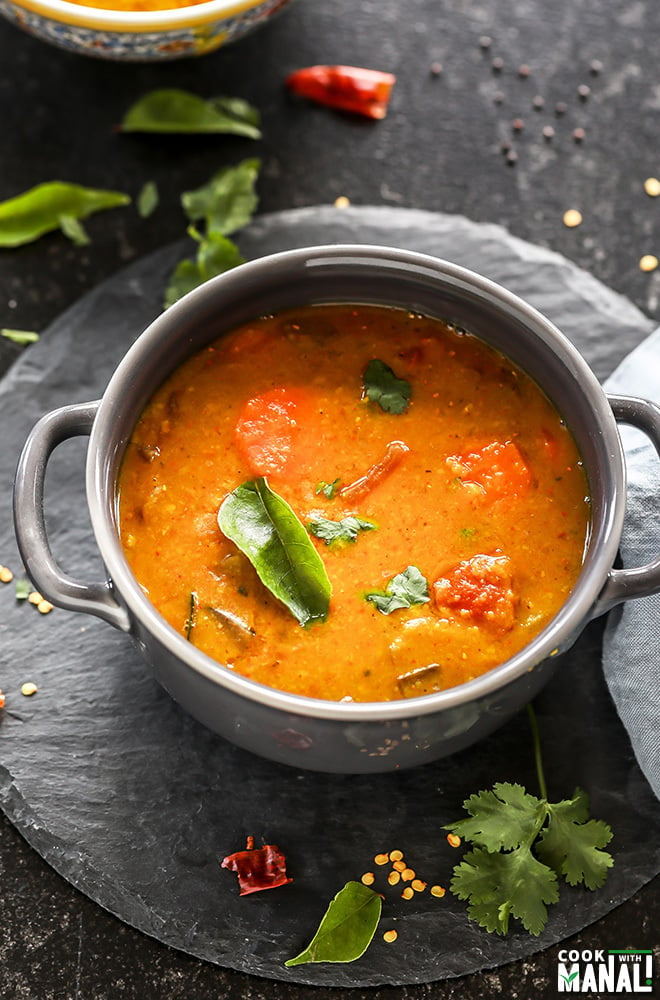
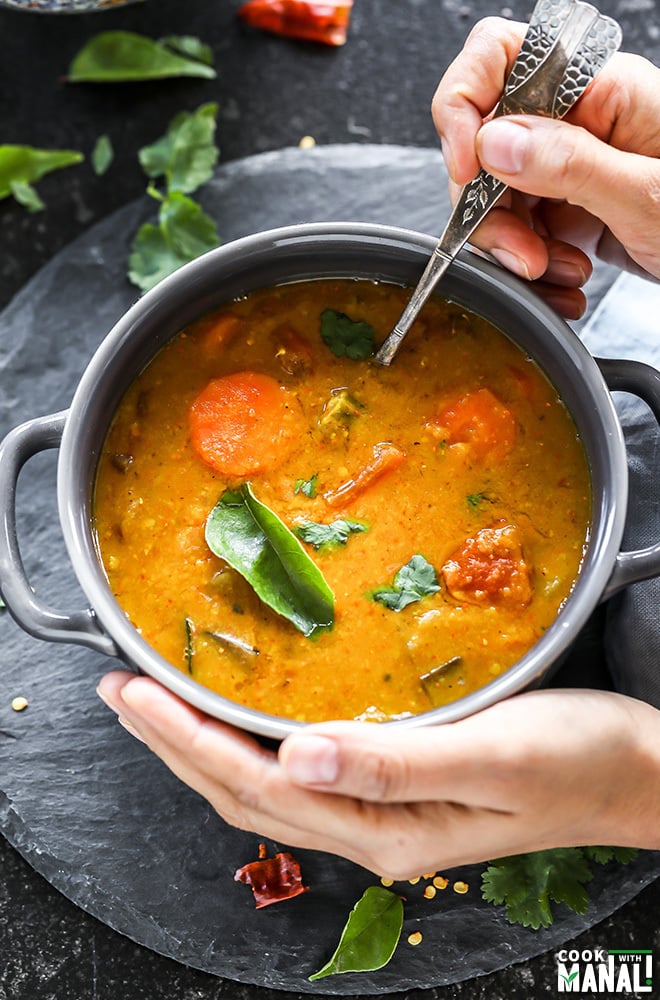
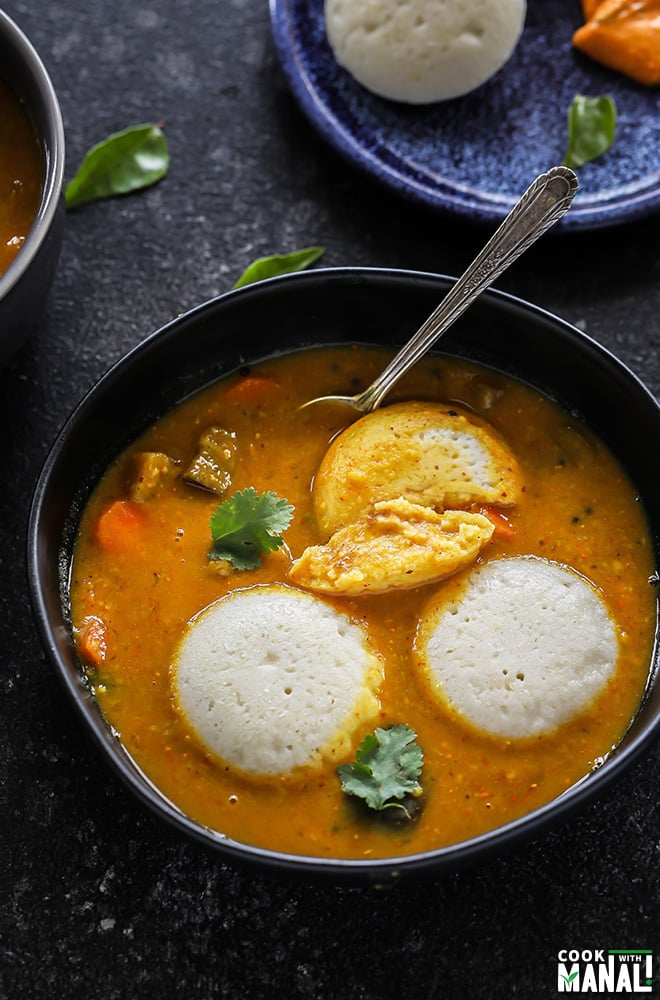
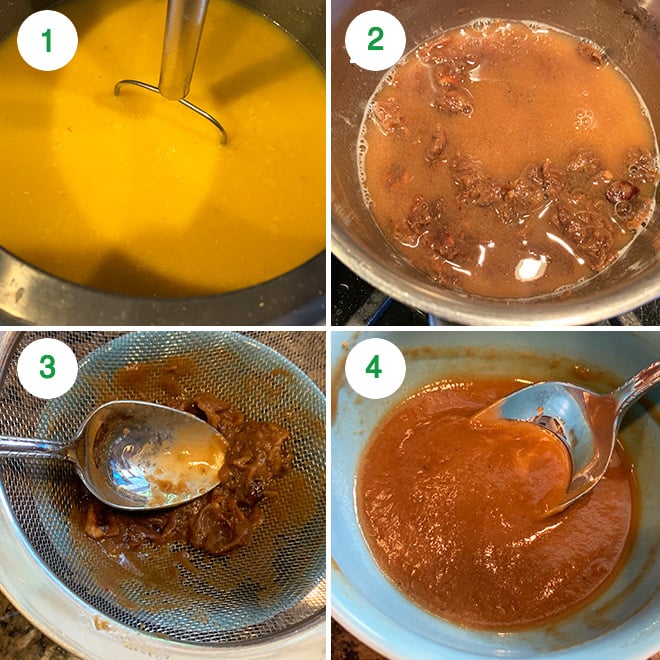
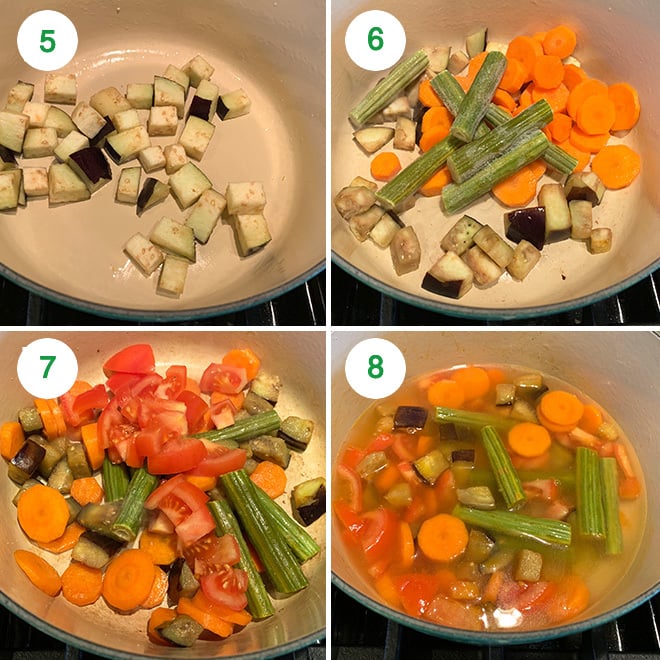
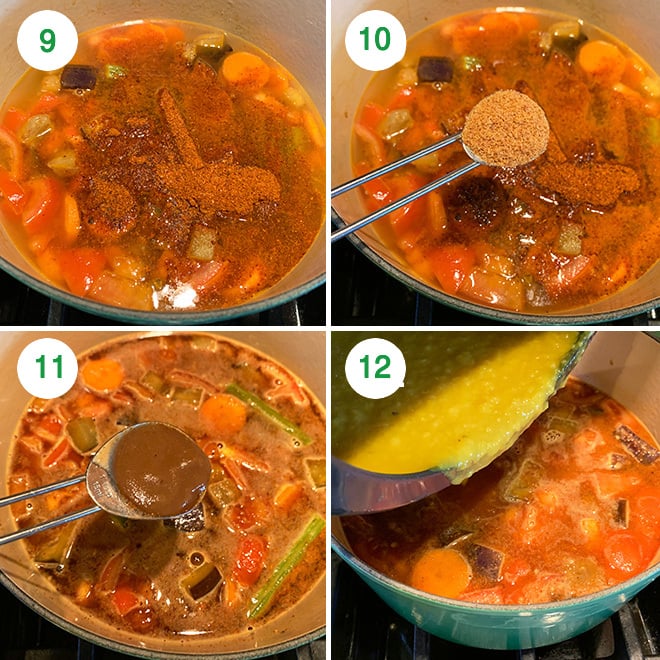
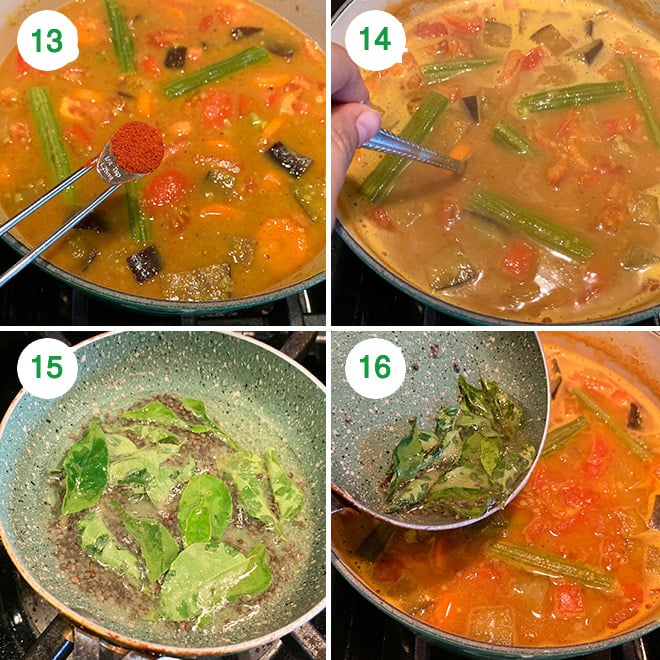
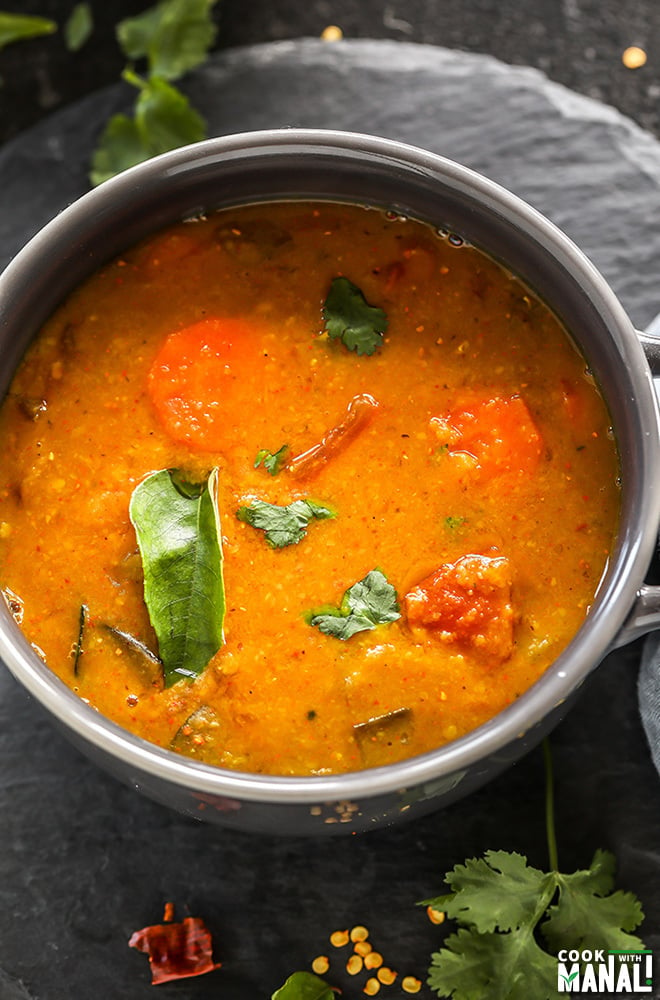
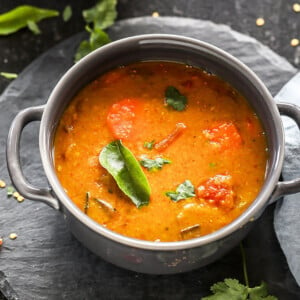
title: “Sambar How To Make Sambar " ShowToc: true date: “2024-10-05” author: “Melonie Sable”
May 02, 2019, Updated Sep 02, 2022 It’s best enjoyed with rice, idli or dosa. Don’t let the list of ingredients intimidate you, it’s actually easy to put together! When we eat South Indian food in restaurants, my focus is always more on the sambar and chutneys than the idli and dosa. Sure, I love my idli and dosa but a good sambar and chutney makes all the difference in my opinion. Unfortunately, most of the restaurants here make really bad sambar. It’s usually tasteless and lacks flavor. So I compensate for the lack of it by making a good sambar at home. My sambar recipe is pretty basic and straight forward. I don’t use a ton of veggies either but I can promise that this make a good basic sambar.
What is Sambar
Sambar is a lentil and vegetable stew, most popular in South India. Even though I am not south Indian, I have always loved it as far as I can remember. So, I guess it’s safe to say it’s popular all across India. Here are the key ingredients required to make a sambar. Lentil (dal): Lentils form the base of sambar. Usually it’s made with toor dal (split pigeon peas lentil) but can also be made by mixing moong and toor dal or masoor (red lentils) and toor dal. You can cook the dal either in a stove top pressure cooker or Instant Pot. Vegetables: a number of vegetables are traditionally used in sambar like pearl onion, tomatoes, pumpkin, eggplant, drumstick, carrots, okra etc. Using different vegetables makes the sambar flavorful. However, my recipes doesn’t use a ton of veggies. I use tomato, drumstick, eggplant and carrots. You can add more veggies as you like. Always remember to not overcook the veggies for your sambar. They should hold their shape and not become mushy. Sambar powder: the taste of the sambar depends heavily on the sambar powder which is a spice mix made by grinding several spices. Use your favorite brand of sambar powder or make one at home (see recipe below). Tamarind & Jaggery: these ingredients add the little tartness & sweetness to the sambar respectively. Final Tadka: and a good tadka (tempering) at the end with mustard seeds, curry leaves and hing is what makes the sambar so delicious! I like using ghee for the tadka in my sambar. You can use oil if you want to keep this recipe vegan. And that’s pretty much it what you need to make sambar at home. The consistency of sambar can be adjusted to preference. Some like really thin sambar while others prefer it thick. I prefer mine on the thicker side.
Homemade Sambar Powder
In case you can’t find sambar powder, here’s a quick recipe to make it at home. In a pan over medium heat, dry roast the following spices in a pan on medium heat until fragrant, around 3 to 4 minutes.
1 tablespoon chana dal 1 tablespoon coriander seeds 2 dried red chilies (or more to taste) 1/2 teaspoon cumin seeds 1/2 teaspoon mustard seeds 1 clove
Let cool and then grind to a powder. Store in an airtight container and use as needed.
Serving Suggestions for Sambar
Sambar is served traditionally with idli, dosa, vada, rice. But honestly you can eat it with anything you like. I also eat it with my roti, quinoa, brown rice! ‘
Method
1- To a pressure cooker, add the rinsed dal with 1/2 teaspoon turmeric, 1 teaspoon salt and 3 cups of water. Cook for 5 whistles on medium-high flame, then lower the heat to medium-low and let it cook for another 5 to 6 minutes. Once the pressure releases naturally, open the cooker and mash the cooked dal lightly with a potato masher. Set aside. If using an Instant Pot, pressure cook for 9 minutes on high pressure with natural pressure release. 2- Meanwhile soak 1 tablespoon tamarind piece in 1/3 cup of hot water for 15 to 20 minutes. 3- Then strain the liquid using a strainer. 4- You will get 3 to 4 tablespoons of tamarind water/juice. Set it aside. 5- In a pan, heat 2 teaspoons oil on medium heat. Once the oil is hot, add the chopped eggplant and cook for around 2 minutes. 6- Add carrots and frozen drumsticks and 1/2 teaspoon salt and cook for 2 more minutes. 7- Add the chopped tomato and cook for 1 minute. 8- Then add around 3 cups (24 oz) water and stir. 9- Add 2 tablespoons sambar powder (or adjust to taste). 10- Also add jaggery powder, again adjust to taste. 11- Add 4 tablespoons of the tamarind water that you had extracted earlier. 12-Stir in the cooked dal. 13- Also add the kashmiri red chili powder, if using. 14- Stir everything together and let the sambar simmer on medium heat for 5 to 6 minutes. 15- For the tempering, heat 1 tablespoon ghee (or oil if you want to keep this vegan), in a small pan on medium heat. Once the ghee is hot, add mustard seeds and let them pop. Then add the hing and curry leaves for stir for few seconds until leaves turn crisp. 16- Pour tempering over the simmering sambar. Serve the sambar hot with idli, dosa or rice! If you’ve tried this Sambar Recipe then don’t forget to rate the recipe! You can also follow me on Facebook, Instagram to see what’s latest in my kitchen!








